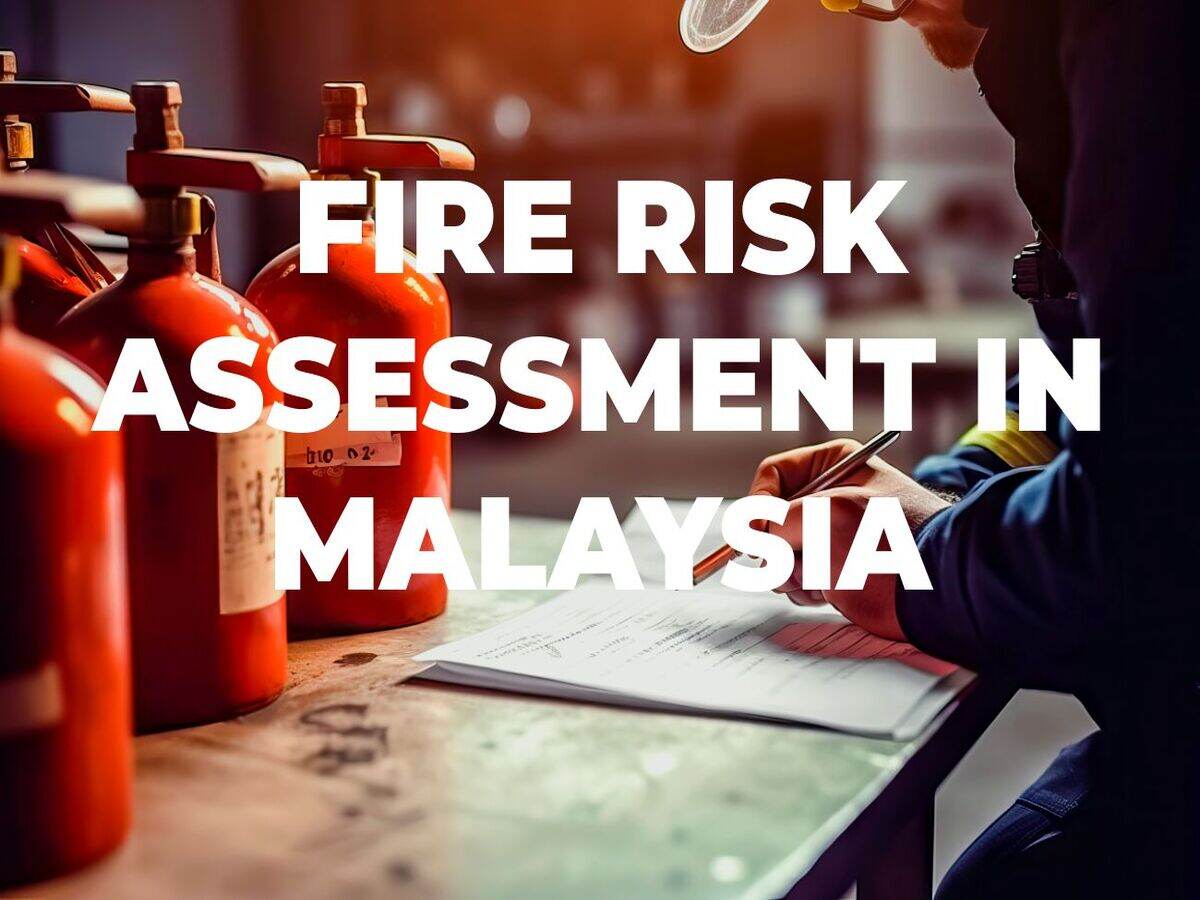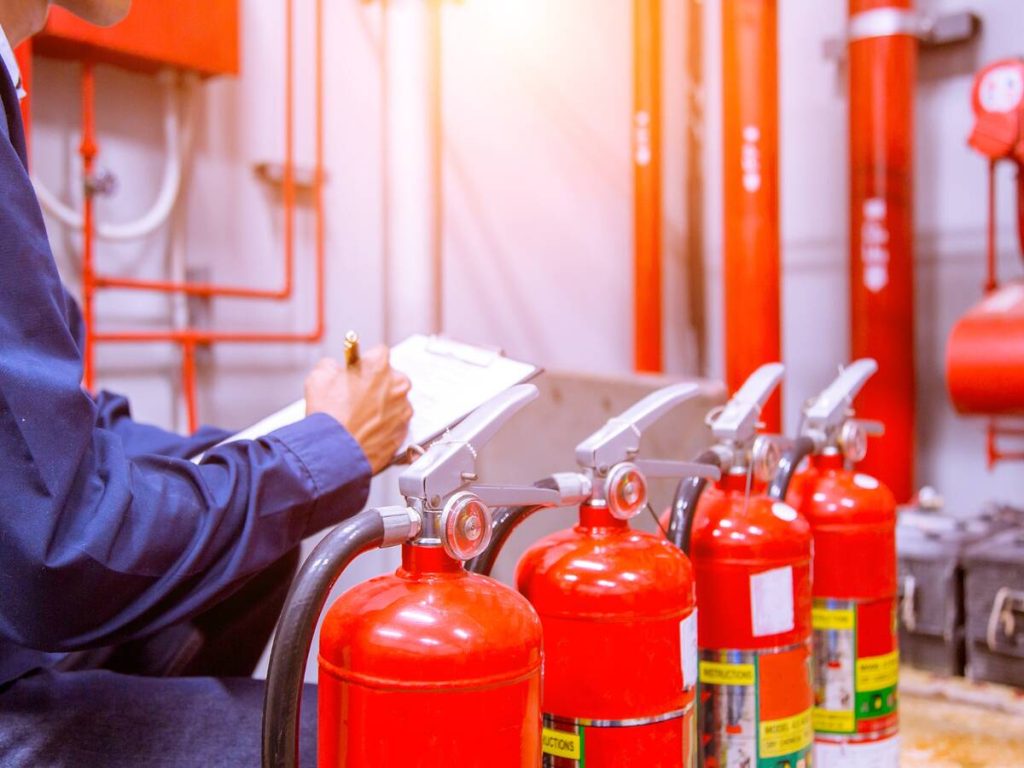Fire Risk Assessment in Malaysia
In a rapidly developing nation such as Malaysia, safeguarding the well-being of its citizens and protecting valuable properties is an overarching concern. Among the many facets of ensuring public safety, fire safety stands as a critical pillar. Fire incidents in residential, commercial, or industrial settings can result in catastrophic consequences, ranging from loss of lives to extensive property damage. Conducting a comprehensive Fire Risk Assessment takes centre stage to avert such tragedies.
In this article, we will embark on an informative journey through the concept and significance of Fire Risk Assessment in the Malaysian context. We will dissect this crucial process’s intricacies, unravel its essential steps, and shed light on why it holds an indispensable role in Malaysia’s safety landscape.
What is Fire Risk Assessment?
A Fire Risk Assessment is a systematic and comprehensive evaluation of a building’s susceptibility to fire hazards, an assessment of the individuals who may be in harm’s way should a fire occur within that building, and an examination of the strategies and safeguards to diminish these potential risks. The fire risk assessment process is a proactive measure to guarantee that in the unfortunate event of a fire, every occupant can efficiently and securely evacuate the premises while also striving to minimise the damage caused by the fire.
The objective of a Fire Risk Assessment is to meticulously identify, assess, and address any aspects that could potentially lead to a fire outbreak within the premises. It involves scrutinising the physical attributes of the building, such as its construction materials, electrical systems, and heating equipment, to spot any fire-prone elements. Furthermore, it considers the human part, recognising the most significant risks, including employees, residents, and visitors, and tailoring existing fire safety measures to cater to their needs and vulnerabilities.
By critically evaluating these factors, a Fire Risk Assessment facilitates formulating and implementing a comprehensive fire safety plan. This plan encompasses a series of preventative and protective measures designed to minimise the likelihood of a fire occurring and, in the unfortunate event that it does, ensure that everyone within the premises can exit safely. Additionally, it outlines utilising fire safety equipment, emergency communication systems, and evacuation routes.
Steps Of A Fire Safety Risk Assessment
Now, let’s break down the steps in conducting a Fire Safety Risk Assessment in Malaysia.
Step 1: Identify the Fire Hazards
The initial and fundamental step in a Fire Safety Risk Assessment is the identification of potential fire hazards within the building. This meticulous examination encompasses scrutinising every nook and cranny for anything that could ignite a fire. In Malaysia’s tropical climate, specific attention must be paid to fire hazards exacerbated by environmental conditions.
Malaysia’s warm and humid climate poses unique challenges. Electrical issues, such as faulty wiring due to humidity corrosion, can significantly contribute to fire hazards. Furthermore, improper storage of flammable materials can turn minor incidents into devastating fires. Given these conditions, a comprehensive assessment should include:
- Evaluating the condition of electrical systems.
- Identifying potential sources of sparks.
- Ensuring the safe storage of flammable materials.
Step 2: Identify People at Risk
In this critical step, it’s imperative to recognize and classify individuals who may be vulnerable in the event of a fire outbreak. The diverse demographics in Malaysia, with varying age groups, physical abilities, and linguistic backgrounds, add an extra layer of complexity to this assessment.
To ensure the safety of everyone in the building, the assessment must consider factors such as:
- Age: Are elderly individuals or children present who may require extra assistance during evacuation?
- Mobility: Are there people with mobility impairments who may need specialized evacuation plans or equipment?
- Language barriers: Given the multicultural nature of Malaysia, language differences can hinder effective communication during emergencies. Special provisions may be necessary to ensure that everyone understands evacuation instructions.
By identifying these vulnerable groups, the assessment can develop tailored evacuation plans and strategies to guarantee the safety of all occupants.
Step 3: Evaluate, Remove or Reduce the Risks
Once fire hazards and at-risk individuals are identified, the next crucial step is to assess and mitigate these risks. This involves a multifaceted approach, including:
- Implementing safety protocols: Establishing strict safety protocols, including fire prevention measures, regular equipment maintenance, and fire safety training for staff and residents.
- Installing fire suppression systems: In line with Malaysian regulations, fire suppression systems such as fire sprinklers, fire alarms, and fire extinguishers can significantly reduce the risk of fire-related damage.
- Structural improvements: Structural changes may be necessary to enhance fire safety. This could involve modifying building layouts to improve evacuation routes, ensuring adequate fire exits, and enhancing building materials’ fire resistance.
Compliance with local building codes and regulations in Malaysia is pivotal. Adherence to these standards ensures that the building can effectively handle fire-related risks.
Step 4: Record your Findings, Prepare an Emergency Plan and Provide Training
Documentation is the backbone of a comprehensive Fire Risk Assessment. Precise records of all findings, risk assessments, and actions taken to mitigate identified risks must be kept. This meticulous documentation serves as evidence of compliance and due diligence.
Moreover, the development of a robust emergency plan is vital. This plan should outline precise evacuation procedures, emergency contact information, and the roles and responsibilities of designated individuals during an emergency. Regular drills and training sessions ensure all occupants are familiar with evacuation routes and emergency procedures.
Step 5: Review and Update the Fire Risk Assessment Regularly
Fire risks are dynamic and can evolve due to factors such as building renovations, equipment upgrades, or changes in occupancy. Hence, the final step is periodically reviewing and updating the Fire Risk Assessment.
This step is particularly crucial in Malaysia, where rapid economic development often leads to changes in infrastructure and occupancy. Regular assessments and updates ensure that fire door safety measures remain effective and aligned with the ever-changing circumstances.
Conclusion
Ensuring fire safety through a comprehensive Fire Risk Assessment is not just a legal requirement in Malaysia; it’s a vital commitment to safeguarding lives and property. We’ve explored the critical steps involved in this process, from identifying fire hazards and at-risk individuals to evaluating and mitigating risks, and finally, the importance of regular reviews and updates to stay compliant and keep occupants safe.
At VIC Engineering, we understand the significance of Fire Risk Assessments in Malaysia’s ever-evolving landscape. Our dedicated professional fire risk assessor is well-versed in Malaysian fire safety regulations and standards. We are committed to helping you navigate the complexities of fire safety, ensuring that your buildings are equipped to handle fire-related risks effectively.
Don’t compromise on safety. Contact VIC Engineering today to schedule a consultation and discuss your Fire Risk Assessment needs. Together, we can create a safer environment for everyone. Your safety is our priority.


